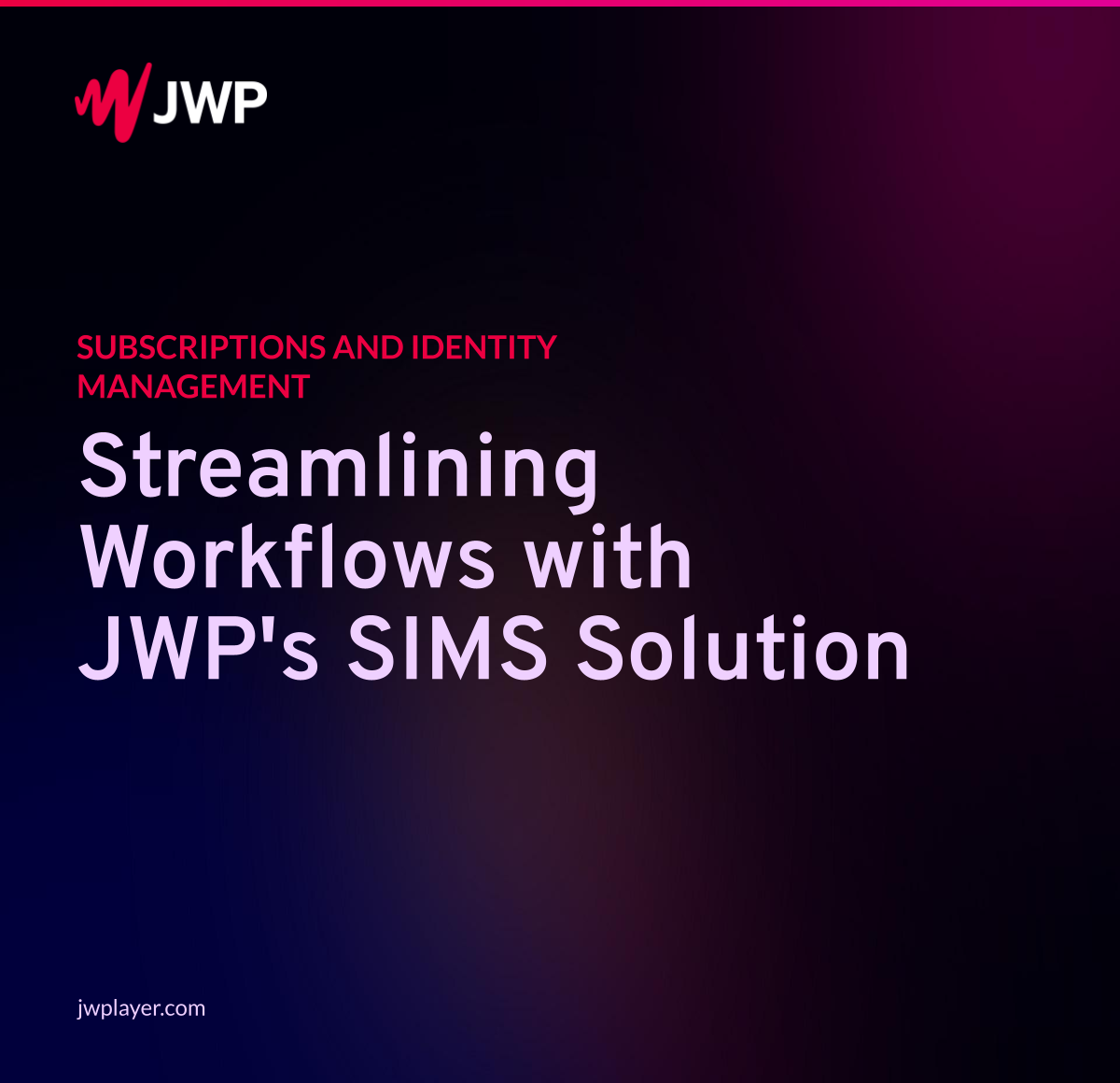Subscription and Identity Management Services (SIMS) are crucial components in the video industry, serving as the backbone for efficient, secure and user-friendly interactions across various online platforms and services. As consumers demand more personalized and flexible access to content, the need for robust, efficient and user-friendly SIMS platforms has grown exponentially.
Simplifying workflows has become the primary goal for customers, enabling them to focus on content creation while ensuring seamless monetization and user management. JWP’s SIMS solution, particularly when utilized through the InPlayer dashboard, exemplifies this trend by offering a suite of features designed to optimize operations and enhance productivity.
1. Plug-and-Play Simplicity
One of the standout features of JWP’s SIMS solution is its plug-and-play capability. The process of setting up monetized content is straightforward and intuitive:
- Create an Asset: This is the foundational step where you define the content you wish to monetize.
- Set Up Your Price: Assign a pricing structure to your asset, whether it be a one-time payment, subscription or rental.
- Upload Your Video: Integrate your video content into the created asset.
- Embed on Your Webpage: Finally, embed the asset on your webpage.
This streamlined process eliminates the need for complex configurations or extensive technical knowledge, allowing content creators to focus on what they do best—producing engaging content.
2. Efficiency Through Templates
For content creators who frequently use the same setup for multiple videos, the template feature is a game-changer. Templates enable users to save their preferred configurations and apply them to new videos with just a few clicks.
This not only saves time but also ensures consistency across all content, reducing the potential for errors and maintaining a consistent user experience.
3. Seamless Integration with JWP Account
One of the more tedious aspects of content management is the manual import of videos. JWP’s SIMS solution simplifies this by allowing automatic import of all videos directly from the user’s JWP account.
This integration means that users do not have to individually create assets for each video, significantly reducing the workload and speeding up the process of getting content online.
5. Direct Real-Time Revenue
Financial processing can often slow down content monetization workflows. JWP’s SIMS solution addresses this by allowing users to receive revenue directly into their accounts in real-time.
This eliminates the need for additional financial processing steps, ensuring that content creators have immediate access to their earnings. This real-time revenue stream not only improves cash flow but also provides immediate feedback on the financial performance of the content.
6. Advanced Analytics
Understanding how content performs is crucial for making informed decisions. JWP’s SIMS solution offers advanced analytics that provide deep insights into viewer behavior, revenue generation and overall content performance.
These analytics can help users identify trends, understand audience preferences and optimize future content strategies. By leveraging these insights, content creators can enhance their offerings, tailor their marketing efforts and ultimately increase their revenue.
Additional Considerations
While the InPlayer dashboard offers a robust suite of features out of the box, there are additional capabilities that users might find beneficial but are not immediately accessible. For instance, the bulk creation of vouchers can streamline promotional efforts, though this feature requires assistance from an account manager. Despite not being readily available to all users, knowing that such options exist and can be requested adds a layer of flexibility and customization to the workflow.
Conclusion
JWP’s SIMS solution, particularly through the InPlayer dashboard, is designed with the end-user in mind. Its plug-and-play simplicity, template usage, seamless integration with JWP accounts, real-time dashboard edits, direct revenue capabilities, and advanced analytics collectively streamline workflows and enhance operational efficiency.
By leveraging these features, content creators and managers can focus more on producing high-quality content and less on the complexities of content management and monetization.
As online content continues to evolve, tools like JWP’s SIMS solution will become increasingly essential for creators aiming to enhance their efficiency and profitability. For those using the InPlayer dashboard, the journey from content creation to monetization has never been smoother or more efficient.
